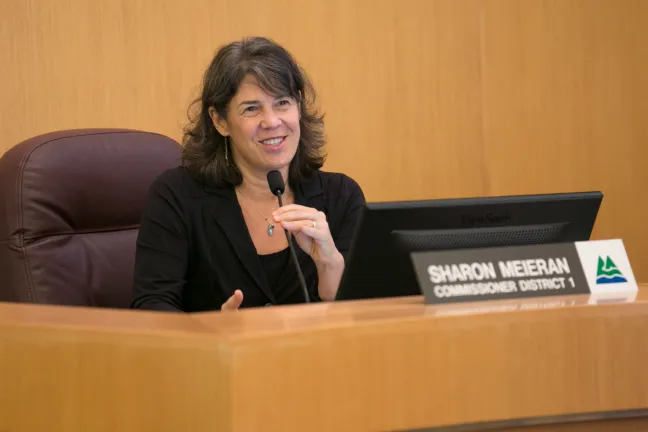Commissioner Sharon Meieran knows from years of experience as an emergency room doctor just how devastating the effects of an unhealthy diet can be.
“I see 9-year-old kids who come in who weigh 200-plus pounds,” Meieran said. “It used to be an outlier, maybe, when I was in medical school. Now it’s just becoming the norm.”
Sugar-sweetened beverages, like sodas, are particularly harmful, Meieran said, recalling the times she has encountered one and two-year-old kids drinking soda from bottles.
“There is so much morbidity and, yes, even mortality associated with the overconsumption of sugar-sweetened beverages,” Meieran said, adding that it’s important to know what kind of impact of sugary drinks are having on the Multnomah County community. “We need to know what the facts are and how this issue impacts our community so dramatically.”
At Meieran’s request, the Multnomah County Health Department briefed the Board of County Commissioners Tuesday on the health impacts of sugar-sweetened beverages. The briefing provided the board with information about the relationship between sugar-sweetened beverages and diet and obesity-related chronic disease.
The presenters, who also shared some of the Health Department’s current chronic disease prevention strategies, did not make any policy recommendations.
Chronic diseases, which include heart disease and diabetes, are the leading cause of death in Multnomah County and the state of Oregon. There is no single cause for such illnesses, said Multnomah County Health Officer Dr. Paul Lewis, but a number of factors can contribute to causing them, including a diet with a lot of sugar.
“Sugar sweetened beverages really do matter,” Lewis said. “One reason they matter is just by sheer volume. Sugar sweetened beverages are the largest source of added sugar in a diet.”
The average American drinks more than 40 gallons of sugary beverages a year, said Lewis.
The drinks are empty calories that are particularly dangerous because, unlike even unhealthy food, they don’t leave you feeling full, he said.
“Normally when you eat a couple hundred calories, you’re good for a couple hours,” Lewis said. “But a couple hundred calories of sugar-sweetened beverage doesn’t change eating habits whatsoever.”
In Multnomah County, almost 10 percent of adults report daily soda consumption, said Dr. Frank Franklin, director of Community Epidemiology Services. In 2015, about 9 percent of eighth and 11th graders said they drank soda everyday.
Men, people with a high school education or less and those living at or below the poverty line were more likely than women, people with some college education and those living above the poverty like to drink a soda a day, Franklin said, citing data from 2012 to 2015. Black and Hispanic or Latino children, adolescents and adults also were more likely than their white counterparts to consume soda daily.
Interim Public Health Director Rachael Banks said it’s important to consider social and environmental factors with those findings.
“While you’ve seen that there are disparities and differences in consumption that are based on race and/or income, what that data doesn’t show is that there’s also disproportionate exposure to sugar-sweetened beverage marketing and disproportionate access (in those communities),” Banks said. “We just want to dispel the myth that many people have when they see that type of data: That if those people -- whoever those people are -- would only do this more or do this less, then there wouldn’t be these sort of disparities. We know that’s not the case; that’s not the whole story.”
Studies have found significantly higher exposure to food related ads, including for fast food and sugary beverages, in areas with a higher proportion of black children and adolescents and people with low-income, Banks said.
That matters because marketing can be misleading and create confusion about what constitutes a healthy food choice, Banks said. Combating it requires multi-layered strategies that address all of the different ways people gather information, including through the organizations and communities to which they belong.
The Health Department, which considers reducing sugar-sweetened beverage consumption as part of its strategy for preventing chronic disease, works with community partners and other local governments to have a layered strategy for disease prevention.
Currently, for instance, the department works with parents and children in childcare settings, connects people to locally grown farmers and produce, helps retailers to promote more healthy options and coordinates with other governments to improve access to healthy food.
“The sweet spot, based on the demographics and the disparities, is to use evidence based approaches, work in partnerships with communities and be able to work across the lifespan, paying specific attention to neighborhoods that are experiencing a layered impact of marketing,” Banks said.

